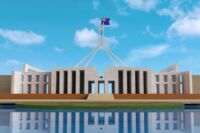China’s Diplomatic Row With Australia Just Keeps Getting Worse
What You Need To Know
The diplomatic row between China and Australia just keeps getting worse, with no obvious off-ramp to the downward spiral in relations between the two key trading partners.
Ties have been fraught since 2018 when Canberra barred Huawei Technologies Co. from building its 5G network on national security grounds. They went into the deep freeze earlier this year after Prime Minister Scott Morrison’s government called for an international inquiry into the origins of the coronavirus.
Relations worsened after China imposed tariffs on Australian barley and wine and blocked shipments of timber, coal, lobster and other goods. Further damaging ties, a Chinese diplomat gave journalists a list of 14 grievances against Australia and a Foreign Ministry spokesman tweeted an image of an Australian soldier holding a knife to the throat of an Afghan child — a barbed reference to an ongoing war crimes probe.
Canberra says it won’t be cowed by “economic coercion” and took China to the World Trade Organization over barley and wine tariffs. China has responded in kind and says Australia is to blame for the problems due to its interference in China’s internal affairs.
It’s a marked reversal of the once-cordial relationship that saw Australia host a state visit by President Xi Jinping in 2014 and sign a comprehensive free-trade agreement a year later. However, despite the tensions Australia’s exports to China have continued to set records due to the high price of iron ore.
Key Coverage
By The Numbers
- 37% The proportion of Australian exports shipped to China in 2019
- A$246 billion The value of two-way trade between Australia and China
- 64% The proportion of Australians who view China as more of a security threat than an economic partner, according to a survey by the Lowy Institute
Why It Matters
As the developed nation most dependent on trade with China, Australia is showing other nations the steep cost of diplomatic tensions with Beijing. The ongoing reprisals mean Canberra needs to diversify its export markets by boosting trading ties with Asian powerhouses such as India and Indonesia and by inking new deals with the European Union and U.K.
The growing spat illustrates China’s propensity to use trade as a diplomatic cudgel and demonstrates the aggressive “wolf warrior” diplomacy tactics that have also strained ties with countries including Canada and the U.K. The economic offensive against Australia is meant to deter others, including the EU and Japan, from siding with U.S. efforts to counter China’s rise. But with U.S. President Joe Biden vowing a more multilateral approach after the Trump administration’s “America First” doctrine, Beijing’s strategy risks backfiring.
There are already signs that regional groupings such as the Five Eyes intelligence-sharing network and the U.S.-backed Quad are being revived. And Beijing’s treatment of Australia may spur like-minded democracies to pull closer together to counter China’s expansion. More than 10 nations have joined Australia’s case at the WTO against Chinese barley tariffs as third parties.
The cost of playing both sides of an economic superpower battle is increasing.







































